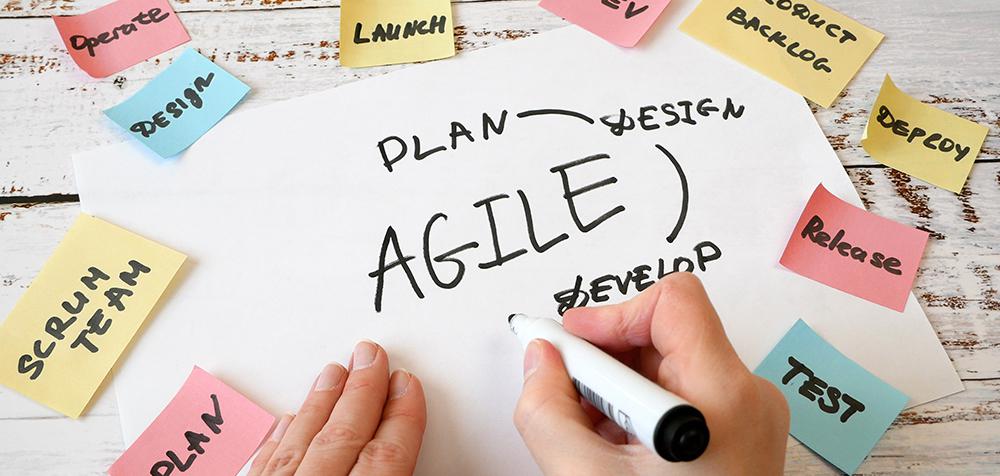
Here's why perfectionists should embrace iterative design
It can take months and considerable effort and resources for a product or service to reach its final iteration. If you have perfectionist tendencies, you could be slowing down the process even more, affecting your project’s chances for success.
The good news is, design iteration, an effective work process with the proven track record of helping companies eliminate flaws in design and user experience, can meet the perfectionist’s high standards for quality while getting the product or project ready in time for the launch.
So, what is design iteration?
Design iteration is a powerful methodology that lets you break up your entire workflow into smaller parts. You’ll then improve and develop each section through a series of procedures that are implemented in repeated cycles or iterations.
The iterative design process is divided into 5 stages:
-
Plan
It’s essential to plan your project methodically at the start, in accordance with the client brief and project requirements. Elements that will influence the UX (user experience) of the site are brainstormed and mapped out, and user feedback will be gathered at this stage.
-
Set requirements
Requirements will be created based on the tests and subsequent findings developed at the planning stage. These requirements will be recorded and presented to the web development team so they can effectively work on the design and coding.
-
Design/analyse
Designers and developers will start work on a prototype based on the set requirements and user feedback. Tasks will be listed out and assigned, and timeframes set based on priority for the delivery of each task.
-
Implement/test
Once the design and development are done, the prototype will be uploaded onto the staging site to be tested for bugs and errors.
-
Review/evaluate
This is the final stage of the iteration – the client and development team will review and evaluate the prototype to check if it has been designed and developed according to the set requirements. If there are issues, the entire cycle or iteration will be repeated, till all requirements are met.
Changing your mindset
Here’s where it gets challenging for perfectionists: Instead of the traditional waterfall method where we work on a website from start to finish and ‘perfect’ it before it’s launched – a process that could take many months – iterative design breaks down the process into smaller, manageable parts, so you’ll be able to effectively troubleshoot, test and troubleshoot again, while you quickly develop your site.
When can I use iterative design?
You’ll be able to adopt and implement the iterative design method at any part of your web or app design and development process. This method has been used with success by departments handling design, development, research/marketing, and testing. While it’s possible to use it to hone and perfect a competed website it’s much easier and much more cost effective to implement this methodology while your website is being developed.
Why should I adopt iterative design methods at work?
- It saves you time and money
You can put up a prototype of your product quickly – this will be cheaper and faster than putting up a completed site, getting feedback and then making changes.
- You’ll be able to market your product faster
Iterative design lets you leverage on being quick to market your product. You’ll be able to corner the market share before your competitors.
- It provides an organised, results-oriented workflow
Iterative design helps you find resolutions for any differences of opinion within the project team as improvements will be made based on concrete tests and consumer feedback, not hunches and predictions.
As tests are carried out at every stage of the development process, iterative design minimises the risks of huge or unforeseen mistakes appearing in the final product.
There will also be fewer redesigns required as any serious design flaws would have been ironed out earlier on in the iterative design process.
- You’ll get a more user-friendly product
As you’ll be gathering user feedback and making tests throughout, you’ll be able to gauge and measure your customer’s response to your product at every stage of your site’s development.
This is much more effective than getting feedback just at the end of the work process, when your website is complete, and it’ll be more difficult – and expensive – to adjust and meet your user’s needs.
- It gives you a more transparent view of the website as it is being developed
You’ll be able to provide feedback, and track, test and review your site at various stages of development rather than being limited to giving feedback on just the final product.
While perfection is impossible to achieve, iterative design comes close as it lets agencies and project teams achieve their goals quickly while minimising the likelihood of unforeseeable mistakes. The process from idea to final development will be seamless as product testing is carried out in tandem with product design and development. This will result in a product that will meet the expectations of both the client and the consumer.

